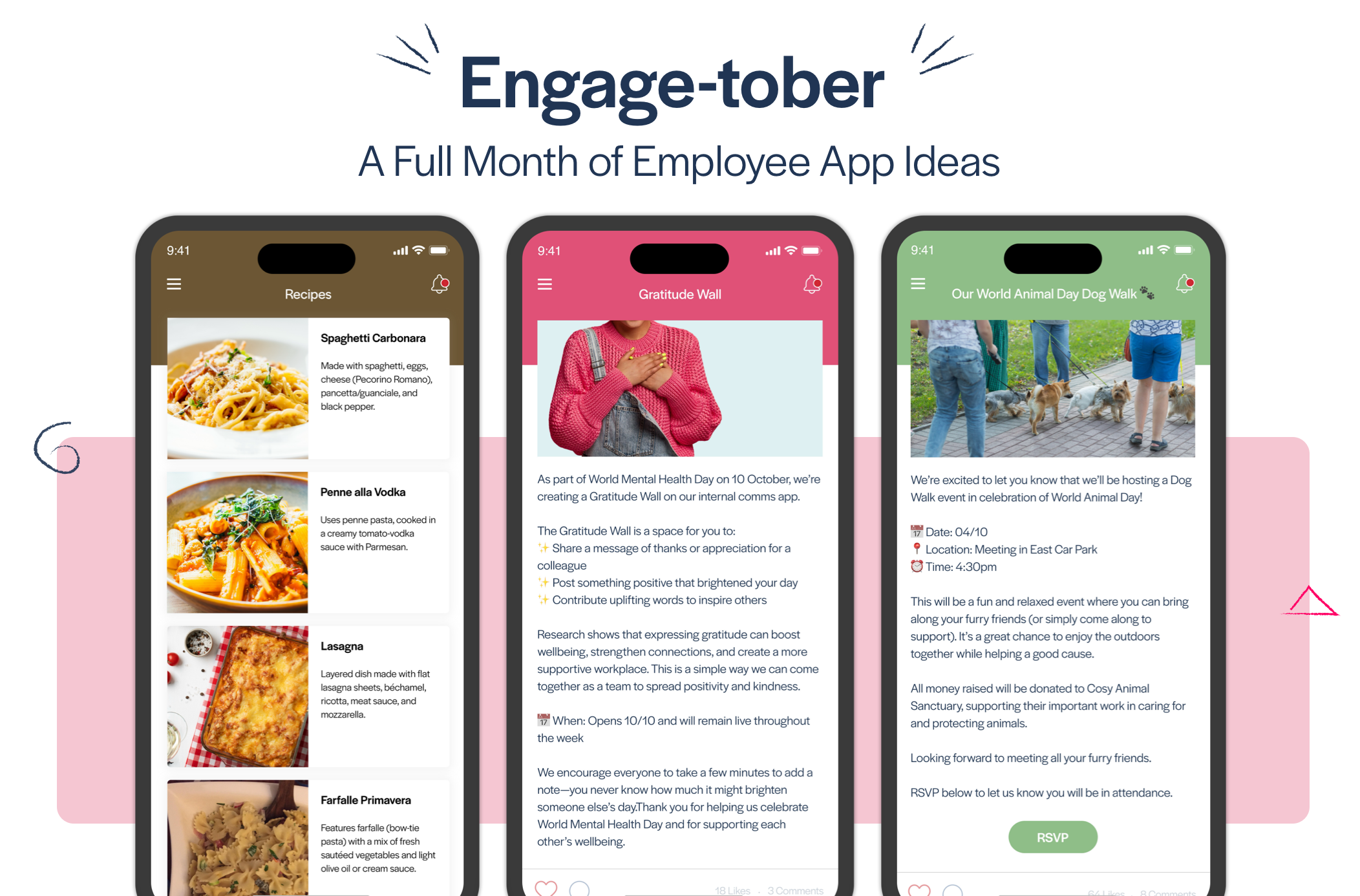
Blog
Internal Communications Trends for 2024
If you’re wondering where to focus your internal communication efforts for the year ahead, here are some of this year’s key trends to look out for.

A new year is always a good opportunity to pause, reflect on the past year and take stock of where we want to go in the year ahead. For businesses, this often includes considering any profits made, setting forecasting targets for the year, and considering what actions need to be taken to meet those targets. This can be as broad and high level as increasing sales or profits, launching a new product, and improving customer service, as a few examples.
But often it can be the smaller changes behind the scenes that reap some of the biggest benefits. Improving employee motivation and engagement can frequently be overlooked as priorities, but it’s these factors that will ultimately enable organisations to achieve those higher-level business goals in the first place. How do we begin to address this? With good internal communication.

A new approach to internal comms: trends for 2024
As organisations adapt to a new normal driven by digital transformation and remote/hybrid work, internal communicators are rethinking how to connect and engage staff. Here are just a few of the predicted internal communications trends for 2024:
Artificial Intelligence (AI)
AI is increasingly being integrated into workplaces for automating tasks and enhancing decision-making processes. It is also expected to significantly influence internal comms in 2024 and beyond. AI can be used by internal communicators to transform content creation and provide a more personalised employee experience, by analysing employee preferences, behaviours, and communications, and consequently facilitating the creation of tailor-made content and interactions, increasing engagement and connection for employees.
According to a report by PwC, 68% of organisations are planning to implement AI-driven communication tools as part of the employee experience, and to enhance frontline worker support. However, internal communicators will need to keep in mind the risks associated with the technology being used, such as data privacy concerns, over-reliance, and misinformation.
Video communication
The use of video is quickly becoming the more preferred channel of workplace communication over text – the mix of visuals, audio, and storytelling can capture employees’ attention more effectively, and complex information or concepts can be simplified and more easily conveyed. All leading to quicker information processing, better message retention, and enhanced employee engagement.
Video enables communicators and participants to convey emotions, tone, and non-verbal cues, creating a powerful emotional impact. This doesn’t just boost employee engagement; it can also create stronger connections between employees across different teams, departments, and locations. Embracing video as a key tool for communications and content therefore can contribute to a more united work culture and inspire greater teamwork, openness, and productivity.

Mobile communication
Hybrid and remote working were already on the rise before the COVID-19 pandemic. Now, 80% of the global workforce are working remotely or away from a desk, including frontline workers. Mobile devices are therefore becoming increasingly important for businesses and communicators to reach everyone.
Remote working is now here to stay, and organisations are working towards not just adapting to remote work but thriving in it. Thanks to the rise of innovative and user-friendly communication platforms available on mobile devices (like employee apps), internal communicators are now better equipped to reach everyone everywhere, as effortlessly as if they were all in the same room. This enables barriers to be broken down, gaps to be bridged between dispersed teams, and creating a positive, more connected workplace culture. All of which leads to greater customer satisfaction and a better bottom line for the business.
Hyper-personalisation & the employee experience
When we think of success in business, we often picture a thriving organisation with a great track record of customer satisfaction. However, good businesses know that to deliver an exceptional customer experience, they also need to make their employee experience just as good.
While many internal and external factors combine to produce the whole of an employee’s experience, internal comms play a key role in this journey. At a basic level, good internal communications can address and negate confusion, demotivation and dissatisfaction. But taking communications to the next level can elevate the overall employee experience dramatically.
Tailoring communications to employees (such as by role, location, or individual preferences) and creating content that actually engages them creates and nurtures a more motivated and productive workforce that feels heard and recognised. In turn, this fosters a shared sense of purpose and connection, and a more united company culture.
Using your employee app for internal communications success
Trends might change each year, but a tool like Thrive’s employee app can make it easy and quick to adapt and enhance how you communicate with your employees.
If you’re keen to take your internal comms to the next level with your Thrive app but aren’t sure how, we’d love to help out! Simply get in touch with our Client Success team and we’ll help you get started.









